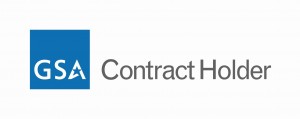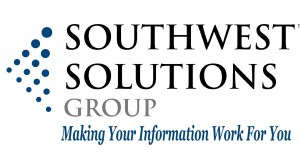Posts Tagged ‘Document Management’
How to Use End Digit or Terminal Digit Filing to Benefit your Organization’s Management of Records
Managing Productivity Problems in Alphabetical and Straight Numeric File Systems
 If you’ve been using an alphabetical or a straight numeric filing system to organize your medical charts or company’s records, you may want to consider the benefits of terminal digit filing or end digit filing. To determine if end digit or terminal digit filing can benefit your organization, ask yourself if you can identify with any of the following statements.
If you’ve been using an alphabetical or a straight numeric filing system to organize your medical charts or company’s records, you may want to consider the benefits of terminal digit filing or end digit filing. To determine if end digit or terminal digit filing can benefit your organization, ask yourself if you can identify with any of the following statements.
- Do you experience misfiles in your alphabetical filing system due to clerks filing names incorrectly or have to constantly train staff on how to file alphabetically?
- Do you have a difficult time evenly and equally distributing the workload to your file clerks for productivity?
- Do you need to backshift files periodically to make room in your file shelving after purging records?
Problems with Alphabetical Filing Systems
You would think alphabetical filing would be easy to set up and manage, but alphabetical filing systems can be very difficult to maintain. Some of the problems with alphabetical filing systems are:
- Difficulty in managing where file growth will occur in your filing system resulting in periodic reorganizing and shifting of files to make room for file growth.
- Misfiled information due to confusion in how to file certain names
Below are some alphabetical filing situations that can cause confusion and hamper the productivity of your records management:
- When a file name includes two surnames – the mother’s and father’s last names – rather than a first, middle, and last name
- If several files have the same name (such as Tom Jones or Mary Smith)
- Determining if Mc names come before or after Mac names
- Patients who go by their middle name instead of their first name or patients with hyphenated names
Problems with Straight Numeric Filing Systems
 Straight numeric filing systems identify each patient with a unique number, eliminating any confusion about which file or patient chart you are looking with an alphabetical filing system. The main problem with a straight numeric filing system is distribution the workload evenly and equally among your staff and reorganizing and shifting files after purging records. Also, with any numeric filing system you need a cross reference database to connect the patient or company name to the file number.
Straight numeric filing systems identify each patient with a unique number, eliminating any confusion about which file or patient chart you are looking with an alphabetical filing system. The main problem with a straight numeric filing system is distribution the workload evenly and equally among your staff and reorganizing and shifting files after purging records. Also, with any numeric filing system you need a cross reference database to connect the patient or company name to the file number.
Benefits of Terminal Digit Filing and End Digit Filing
Terminal digit filing, or end digit filing, makes more sense for managing large quantities of records. Terminal digit and end digit filing allows files to expand at a controlled rate, eliminating the need to shift files after purging older records. Depending on how you set up your terminal digit filing system, the last two, three, or four digits of the file number are treated as a single number. Since all numbers in the file are sorted by their ending digits, equal sections can be set up in your file shelving containing the same number of folders, so work can be divided up evenly amongst your file staff. Terminal digit filing does not change the numeric file labels, it just reorganizes the files in such a way that allows you to better manage your filing system.
If you are considering the advantages of converting to a terminal digit or end digit filing system, call us today at 1-800-803-1083 or contact us, and one of our records management experts will call you to discuss your filing requirements.
10 Steps to Converting Electronic Medical Records (EMR)
Why Electronic Medical Records (EMR)?
 Healthcare providers all across the U.S. are migrating their medical charts to Electronic Medical Records (EMR) to increase record accuracy, decrease waste, eliminate costly storage space, and improve patient care. Hospitals are also seeking to take advantage of government incentives under the American Recovery and Reinvestment Act (ARRA). Right now, everyone is focusing on the “carrot” of payments they can receive by implementing EMR. But the “stick” comes out in 2015, when hospitals that don’t meet federal guidelines for paperless records may be penalized with reduced Medicare reimbursements.
Healthcare providers all across the U.S. are migrating their medical charts to Electronic Medical Records (EMR) to increase record accuracy, decrease waste, eliminate costly storage space, and improve patient care. Hospitals are also seeking to take advantage of government incentives under the American Recovery and Reinvestment Act (ARRA). Right now, everyone is focusing on the “carrot” of payments they can receive by implementing EMR. But the “stick” comes out in 2015, when hospitals that don’t meet federal guidelines for paperless records may be penalized with reduced Medicare reimbursements.
What’s Holding Healthcare Organizations Back from Using EMR?
 The new government rules to EMR are confusing and picking the right document imaging software system is challenging. Plus, there is significant expense and disruption involved when you make such a big change in how medical records are handled. It’s just not feasible to expect hospitals to do this on their own without expert guidance from information management professionals. Software vendors are happy to sell you imaging hardware and advise you on how to install image software on your computer network; but that doesn’t help with the real-life obstacles you will face in converting your medical file charts to electronic images that can be located when you need them.
The new government rules to EMR are confusing and picking the right document imaging software system is challenging. Plus, there is significant expense and disruption involved when you make such a big change in how medical records are handled. It’s just not feasible to expect hospitals to do this on their own without expert guidance from information management professionals. Software vendors are happy to sell you imaging hardware and advise you on how to install image software on your computer network; but that doesn’t help with the real-life obstacles you will face in converting your medical file charts to electronic images that can be located when you need them.
 Getting Help Converting Electronic Medical Records
Getting Help Converting Electronic Medical Records
Converting medical records to a document imaging system takes the help of a qualified information management specialist who has experience in the EMR imaging process and government requirements. A qualified information management specialist will help you understand the process and avoid common mistakes that can set your organization back. For example, EMR compatible medical records scanning involves more than simply scanning records and uploading a pdf of a patient’s chart into a database. If you don’t have federally approved quality controls in place, you may end up with a bunch of electronic records that are not considered true originals. That’s an excuse Medicare can use to deny payment. Below is an overview of ten steps to converting your medical documents to Electronic Medical Records.
10 Steps to Converting Your Paper Medical Records to EMR
1. Survey – Review your current filing system to discover the best documents to image 2. Plan – Develop a master plan to map and document every step of the conversion process including establishing your document indexing requirements 3. Pack & Manifest – Box and label medical charts/records to be imaged so they can be tracked throughout the conversion process 4. Secure Transportation – Ship record boxes with documents to be scanned and imaged via a bonded courier directly to a secure image conversion facility 5. Validate Receipt – Have the image conversion facility provide receipt of shipment and confirmation documentation of all documents are present 6. Prep & Scanning – The image conversion contractor should prep documents, removing staples and repairing any damaged records before scanning documents with a high quality production scanners to ensure a high quality, clear and complete scan of each file 7. Indexing – Document The image conversion contractor should index documents according to your specifications established in Step Two 8. Quality Control – Request a sampling of imaged documents to ensure scanning and indexing accuracy of each record 9. Output – Upload the scanned records into your EMR software system or supply on CD/DVD if requested 10. Store or Shred – Provide storage, shredding, or secure shipping instructions for paper records
Visit www.ssgims.com or call 1-800-803-1083 for more information on document imaging consulting and conversion services.
Conducting A Records and Information Management Audit
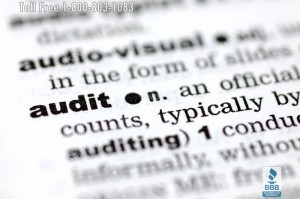 Records and Information Management Audit
Records and Information Management Audit
With the influx of compliance, e-discovery and retention policies, many organizations are desperately seeking to stifle their RIM (Records & Information Management) woes. More often than not, organizations try to fix information management problems at the end of the life cycle without understanding the beginning of the records creation process. Implementing a RIM audit program will help provide solutions that will alleviate record keeping issues at the end of the life cycle. Whether you conduct a RIM inventory/audit yourself or hire an outside resource, the following is a minimum starting place for development of a sound RIM audit program.
 What Documents Are Being Created?
What Documents Are Being Created?
Identify file/document types within each department that are being created. Often times you will find they are not necessarily in line with your retention schedule; something you don’t want to find out in a litigation scenario.
How Are Records Being Created?
How are these records being created and indexed? Are electronic documents printed and filed? Understanding how records are created plays a significant role in solving the mystery of how to manage the information and develop a consistent process that takes the guesswork away from the end user and defines the life cycle of the record. Doing it right in the beginning of the life cycle allows technology solutions to take care of it at the end.
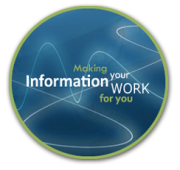 Where Are Documents Being Stored?
Where Are Documents Being Stored?
Where are the documents being stored? Are there duplicate copies unaccounted for? Lack of confidence in corporate record policies and process drives us to create multiple copies of documents so that we always have access. The problem is that when it’s time to apply retention schedules, how do we ensure that we have included the plethora of rogue copies? Understanding where these documents are, and implementing a process for the creation and retrieval of them, along with good training, will help alleviate this issue.
When Does a Record Become a Record?
Too often, documents are neither indexed nor classified until the middle or end of the life cycle. They live in a limbo state often referred to as “working documents”. Documenting and understanding when your end users create records will help define your record policy and ensure that the organizations intellectual property is identified and secured.
Why Do We Do It This Way?
Undoubtedly the most important question to consider when conducting the audit is “why”! “Why do you do it this way?” And the most common answer is….”Because we’ve always done it that way!” Understanding “why” is the first step in improving your records management program and changing the culture of your organization.
Conducting a RIM Audit will provide upper management the information they need to make better enterprise wide decisions for your business.
For more information about how Southwest Solutions Group can help you through the maze of Records and Information Management, call 1-800-803-1083 or click here to contact us.
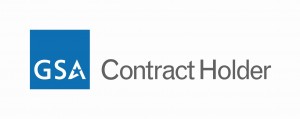
Planning Tips For Document Imaging Solutions
 When to Use Document Imaging
When to Use Document Imaging
Document imaging can be a powerful tool but is only a small piece of a records information management (RIM) system. Using document imaging solely for the purpose of solving problems is not practical. The most efficient and logical use of document imaging is for documents that have a high retrieval rate by multiple users, especially in remote areas. Making sure your application is right for document imaging is the first step in the process.
Planning to Image Documents
There are a few basic questions that should be asked (answered) before investigating the implementation of an imaging system:
- What documents do you want to image?
- What is the retrieval rate of these documents (how often are they accessed?)
- How many people access these documents?
- What do you see as the benefits of having these documents available electronically?
More often than not, if the answers to the first three questions are sufficient, determine if further investigation is sensible. However, the fourth question is vital in in starting to address the return on investment question that will undoubtedly come next.
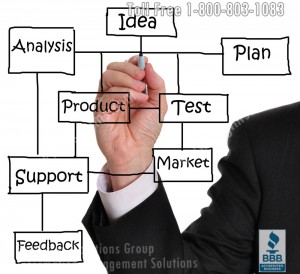 Solid Solutions for Document Imaging
Solid Solutions for Document Imaging
If having certain documents available electronically aids in the level of customer service, then you could well be on your way to implementing an imaging system. If, however, many of the benefits include issues such as “no more lost or mis-filed items”, then you are probably attempting to drink soup with a fork!
When used specifically to address issues of retrieval and multiple accesses, document imaging is a solid solution. There are also times when certain documents are included in the imaging process as a convenience to upper management. This can be a valid solution for VP’s who have a heavy travel schedule and the need for vital documents on a regular basis. It also provides security for original vital documents without sacrificing access to the information these documents contain.
 Indexing Documents for Efficient Access
Indexing Documents for Efficient Access
If you do move forward with an imaging system, keeping the index system concise and as limited as possible keeps the system user friendly and cost efficient. Scanning documents is easy and scanners are relatively inexpensive. The question is will anyone ever be able to find the document after it has been scanned? Also, remember that you must put your files in order before you scan. An inefficient paper based filing system will translate into a messier electronic document system!
Retaining Documents After Scanning
As for keeping the originals, that depends on what is scanned. If only certain documents are scanned from a file and miscellaneous correspondence or other documentation must be kept, then you might as well keep the scanned original. What is more important is that both the paper and the image is part of a comprehensive retention schedule.
For more information on document imaging and retention scheduling, call us toll free at 1-800-803-1083 or visit www.ssgims.com!
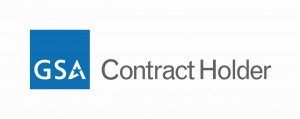
Pharmaceutical Information Management Software And Solutions
Records Management Regulatory Compliance
 In the highly regulated and competitive pharmaceutical industry, corporate records management programs have become indispensable to the continued well-being of the organization. Seeking industry recognized compliance, pharmaceutical companies actively seek records management software and services to assist them in their efforts. Inherent in these policies are the mandatory ability to restrict, locate, track, and audit access to all such records.
In the highly regulated and competitive pharmaceutical industry, corporate records management programs have become indispensable to the continued well-being of the organization. Seeking industry recognized compliance, pharmaceutical companies actively seek records management software and services to assist them in their efforts. Inherent in these policies are the mandatory ability to restrict, locate, track, and audit access to all such records.
Managing the Life Cycle of Documents
 Under these compliance requirements, the pharmaceutical industry is turning to companies like Southwest Solutions Group’s Information Management Division and Infolinx to ensure regulatory compliance and to establish programs reflecting best records management practices for documents and information throughout their life cycle. For example, we recently completed a project for a global biopharmaceutical corporation whose products are marketed in over 50 countries worldwide. Southwest Solutions Group partnered with Infolinx WEB, to implement integrated life-cycle tracking software to manage their pharmaceutical records, including product batch and history files, research notebooks, and intellectual property. According to Anna Stratton, Director of Information Management Solutions for Southwest Solutions Group, “This implementation was unique because it was a model team effort, bringing together the expertise of industry leaders in storage, consulting services and technology.”
Under these compliance requirements, the pharmaceutical industry is turning to companies like Southwest Solutions Group’s Information Management Division and Infolinx to ensure regulatory compliance and to establish programs reflecting best records management practices for documents and information throughout their life cycle. For example, we recently completed a project for a global biopharmaceutical corporation whose products are marketed in over 50 countries worldwide. Southwest Solutions Group partnered with Infolinx WEB, to implement integrated life-cycle tracking software to manage their pharmaceutical records, including product batch and history files, research notebooks, and intellectual property. According to Anna Stratton, Director of Information Management Solutions for Southwest Solutions Group, “This implementation was unique because it was a model team effort, bringing together the expertise of industry leaders in storage, consulting services and technology.”
Records Management Software and Service Solutions
Having provided records management consultation and software services since 1969, Southwest Solutions Group’s Information Management Division has considerable experience helping pharmaceutical providers implement strategic and scalable records management solutions, meeting today’s stringent requirements such as Sarbanes-Oxley and HIPAA. We manage critical business documents from point of creation through final disposition, offering customers reduced risk and improved operational efficiencies with a verifiable return on investment.
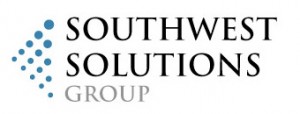 For additional information on document software and services please visit Southwest Solutions Group IMS Division at www.ssgims.com.
For additional information on document software and services please visit Southwest Solutions Group IMS Division at www.ssgims.com.
High Security File Conversion Solutions
File Conversion & Relocation Experts
When the Veterans Benefits Administration (VBA) sought to procure Personal Identifiable Information (PII) File Conversion and File Relocation Services, they selected Southwest Solutions Group’s Information Management Solutions (IMS) Division to standardize and index their records. The VBA, along with multiple other government agencies, were relocating their records to a new facility with a centralized location. IMS staff and leaders were required to undergo a high-level security clearance including fingerprint and background investigation by the GSA security personnel.
Standardizing Record Indexing
The VBA project consisted of VBA standardization of their existing record indexing system to conform to other VBA offices around the country. Existing VBA files were spread throughout several departments with multiple document volumes separated from their original files. These documents had to be brought together, indexed, and then relocated into a centralized high density file shelving system at the new location. Weekly coordination meetings were held to administer and adjust the scope of the conversion project and meet the requirements of VBA. The IMS team developed a barcode tracking system to barcode and track PII documents and 3000 boxes of documents from various points throughout the building (including vehicles). This allowed the team to convert records throughout several areas of the building while still maintaining complete audit and tracking controls.
To see a complete list of our products and services, please visit www.ssgims.com.
Ensuring SUCCESSFUL Barcode, RFID and Digital Implementation

Barcode, RFID & Digital Technology Plan is KEY to SUCCESS
Innovation tracking and management technologies can make a huge difference in your bottom line whether it is for inventory, assets or records and information. The key to a successful implementation is identifying and improving the related business processes. Attaching a barcode or RFID tag to an item or putting document through a scanner is only a small part of the solution. Solution providers should be able to perform a survey and analysis of your existing system to first identify the root of deficiencies and provide a full life cycle overview. Process improvement in partnership with innovative technologies is the key to your return on investment and bottom line improvements. It is also important to identify which technology is best for your business function. Asset Management, Inventory, Digital Document and Archive Management are key business units that can benefit from a single and/or a combination of technologies and many systems can be expanded to include multiple departments or enterprise-wide. Technology can be a powerful tool when implemented to enhance your overall business function and work flow.
Click here to learn more about our Total Solution Integration & Implementation Services

